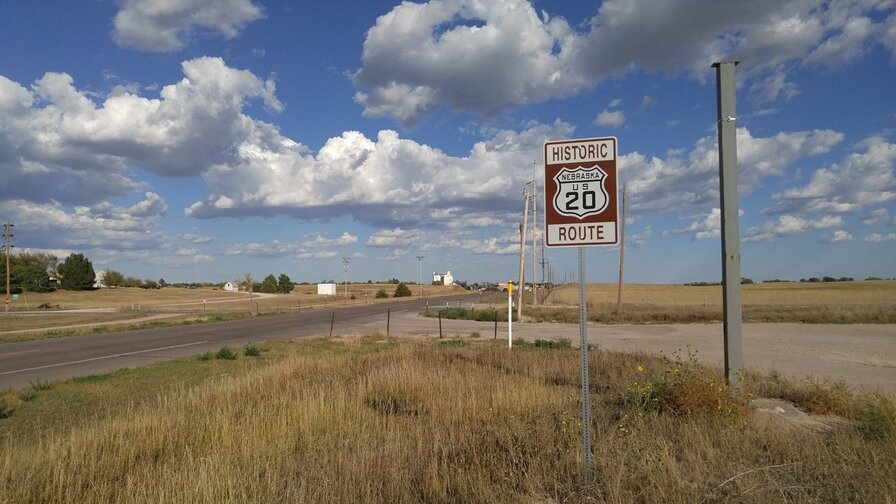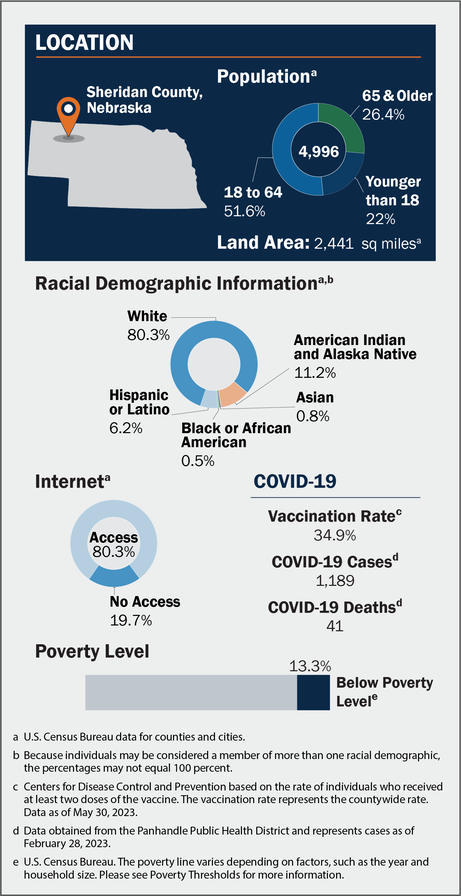Focus on Community: Sheridan County, Nebraska
Sheridan County, NE, was the third of six locations we visited to hear directly from local program administrators, government officials, and other community members about their experiences during the pandemic. The first rural county we visited, Sheridan has a population of 4,996 and is the fourth largest county in the state with a land area of 2,441 square miles. Recipients in the county, including local governments, small businesses, and individuals, received more than $61 million across 31 pandemic relief programs and subprograms during the first 18 months of the pandemic. This report provides a closer look at six of the federal programs, from six federal agencies, that aimed to respond to and ease the effects of the pandemic on the community.

Sheridan County's unique experience
Per square mile, Sheridan County is a lightly populated county. Likely because the population is so spread out across the area, this county only experienced its first confirmed case of COVID-19 on June 27, 2020, almost three months into the pandemic. Officials and individuals explained that although they felt the effects of the pandemic starting in 2020, they actually felt them more in 2022. Their challenges centered on supply chain issues, inflation, and a housing shortage. Supply chain issues included a local volunteer fire department waiting eight months for a shipment of boots, and farmers and ranchers waiting on delivery of specialized equipment. A local nonprofit organization shared that they encountered a shortage of diapers in their community, which impacted their ability to supply these critical childcare supplies to families in need.
Federal programs’ impact on the Sheridan County community
County officials used this additional federal funding in many ways to help respond to the pandemic. For example:
Staff at a local nonprofit organization stated they had a positive experience with the U.S. Department of Agriculture’s Farmers to Families Food Box Program. They also used these food deliveries to distribute PPE and public health information to recipients.
A community resource center received $147,732 from the U.S. Department of the Treasury’s Coronavirus Relief Fund (CRF) and primarily used the funds for food, utility, and rental assistance to minority populations located in and around the county.
Gordon-Rushville Public School District officials said that teacher loss would have been much greater without the U.S. Department of Education’s Elementary and Secondary School Emergency Relief (ESSER) funding. The officials also said the funding allowed them to make upgrades, like acquiring new technology for remote work and making facility improvements, which made the teachers feel more valued.
The federal government funded these programs to ease the effects of the pandemic that posed a serious threat to the health or welfare of the community. Read the full report on Sheridan County's experiences.
Impact on Communities
To truly understand how the pandemic impacted people on the ground across the country, you have to get out into communities—both big and small, rural, urban and suburban—to appreciate the unique circumstances Americans faced. We did just that, examining six communities across the U.S. The report we reference on this page highlights one of those six communities’ experiences.


